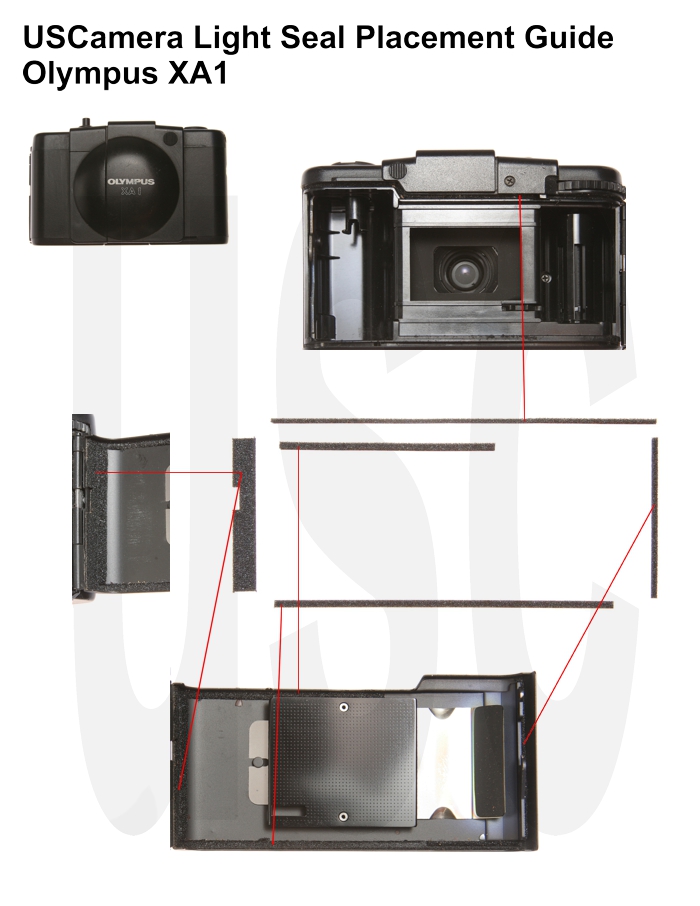Olympus XA1 Light Seal Placement Guide
Olympus XA1 Light Seal Placement Guide
Before doing anything to your camera. Please go here
Olympus XA1 Light Seal Placement Guide
For more information on purchasing this kit, go here
You are installing a 5 piece kit for the Olympus XA1
Take all of the seals out of the kit and lay them out on your work area. This kit includes,
Upper channel seal, camera body – 1 x 1mm
Bottom channel seal, back cover – 1 x 1mm
Top channel seal, back cover – 1 x 1mm
Latch seal, back cover – 1 x 2mm
Hinge seal, back cover – 1 x 2mm
Tech Note The original black paint used on the inside of the back cover, doesn’t like to be disturbed. Furthermore, the paint/finsih may(very likely) start to flake off when removing the seals whether using a solvent of any kind or not. Though time-consuming, we found the best way is to remove as much material as possible by carefully pushing the residue up off the metal with square toothpicks or the bamboo tool cut at a chisel point. Then, with a small amount of Naptha on a Kimwipe clean the remaining residue with 1 or 2 swipes on that area. Now the film back should be prepared for new seals.
Basic Installation Guidelines
Hinge Seal, back cover
Install this seal centering it between the top and bottom edge of the back cover and the cut out for the strap.
Latch plate channel seal, back cover
Also, install this seal centering it in the channel next to the door latch per the image.
Top channel seal, camera body
Install the upper and lower camera body channel seals starting at the hinge side of the camera body. Working from right to left, butting the channel seal up against the hinge seal. The upper channel has the counter actuation lever. You will need to install this seal as close to each side of the counter lever opening as possible, cutting the seal as required.
Door channel seals, back cover.
Install the upper and lower back cover channel seals starting as close to the hinge seal as possible, working from left to right. Tech note. The XA1 back cover top channel seal is shorter than the lower, as designed by Olympus.

First of all, the most important and time-consuming work is removing the old seals. Important to focus on clean, clean, super clean. Also, clean the old residue from the back cover area, door hinge area and anywhere else you see a seal will be replaced. The finest adhesive in the world will not adhere to that sticky, gooey residue that was once a quality light seal. Furthermore, proper installation will give you thousands of light tight exposures.
USCamera | Parts for cameras, flash, lens plus | light seal kits, foam sheets | Olympus XA1 Light Seal Placement Guide






